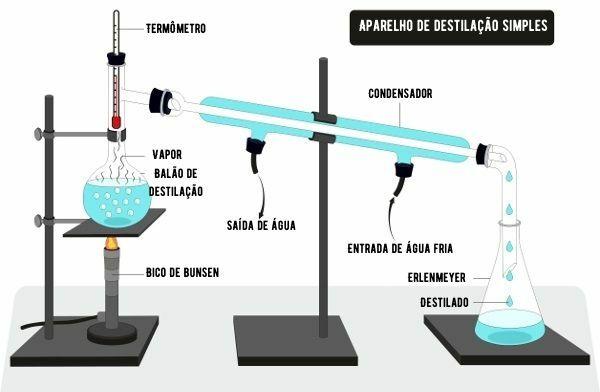The Greek philosophers who lived in the 6th century BC Ç. defended the existence of four elements in the composition of everything that exists: fire, earth, water and air. We cannot despise the idea of these ancient scientists, after all, we, stones, water, stars are made up of few ingredients and the way they interact with each other.
To understand better, look at your finger and observe the cuticle, now imagine if this little piece of skin was stretched until it was the size of a 100-story building, it's hard to believe, but in this small space there is a universe: the quantum world, inhabited by particles subatomic. These particles are the fundamental elements of nature, not Earth, water, fire and air as supposed the ancient Greek philosophers, it is the interaction between these particles that give rise to everything that exist.
Meet now the subatomic particles, also known as the SEVEN ELEMENTS:
1. Neutrino: the lightest form of matter that exists, it is called a phantom particle because it hardly interacts. But where does the neutrino come from? It appears inside the atomic nucleus, when a proton turns into a neutron (or vice versa), we can find this particle in the reaction that takes place in the sun's hydrogen atoms and even within we.
2. Electron: this particle inhabits the atom's electrosphere. This is the largest part of the atom, to compare imagine the atom the size of a grain of sand and the beach is equivalent to the electrosphere, which as you can see is much larger! They are the ones who produce the light bulbs, and imagine: television exists thanks to electrons, they hit the television screen and make the image appear.
3. Quarks: these are the bricks that nature uses to build protons and neutrons, they are superparticles. They are part of the atomic nucleus and have “electrical charge” of different colors: green, red or blue;
4. Gluons: are called Strong Nuclear Force, and have the greatest force in the Universe, even greater than the force of gravity. But when these particles fall apart, the Nuclear Force ceases to exist and a nuclear fission takes place: the atom is split in two;
5. Weak Force Bosons: these particles are the cause of radioactivity, they are the ones that destroy the atoms, despite the name they are essential: without they the Sun would not exist, they have the ability to transform protons into neutrons, this is the reaction that gives rise to the glow of the Sun;
6. photons: particles of the electromagnetic force responsible for keeping the electrons around the nucleus, the second greatest force in the cosmos, photons originate the radio, cell phone and X-ray signals.
7. graviton: is the force responsible for gravity.
Do not stop now... There's more after the advertising ;)
By Líria Alves
Graduated in Chemistry
Brazil School Team
Chemistry Curiosities - Chemistry - Brazil School
Would you like to reference this text in a school or academic work? Look:
SOUZA, Líria Alves de. "7 elements theory"; Brazil School. Available in: https://brasilescola.uol.com.br/quimica/teoria-dos-7-elementos.htm. Accessed on June 28, 2021.



